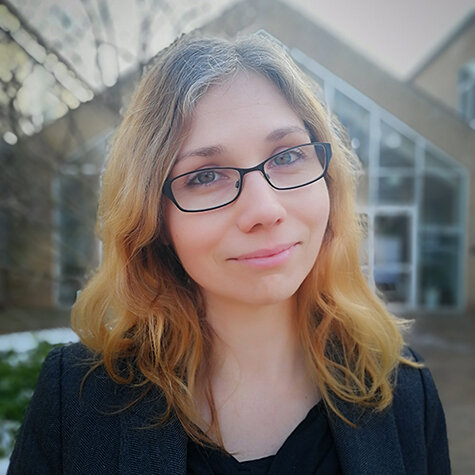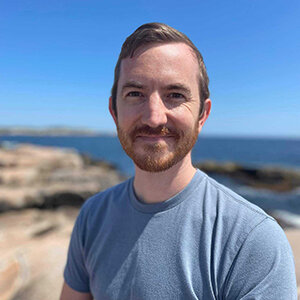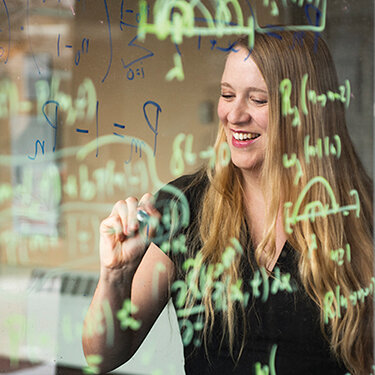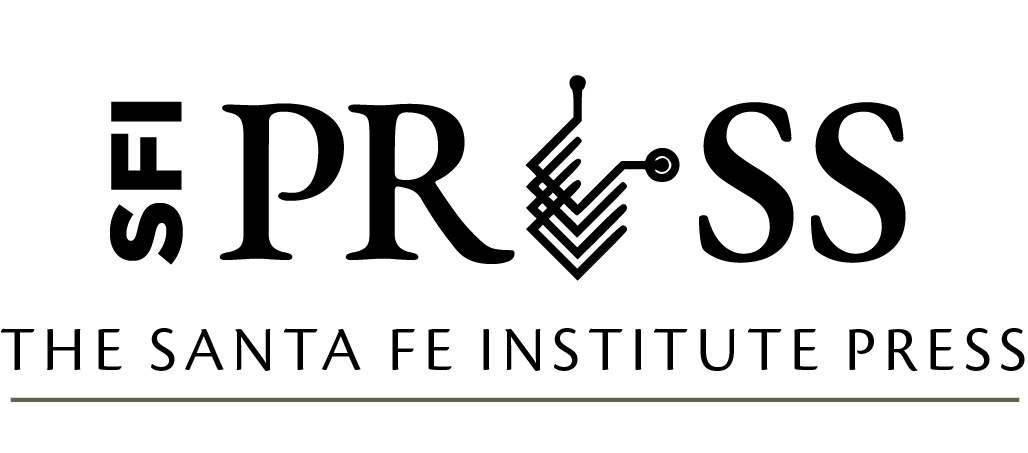Agent-Based Modeling for Archaeology
 Ch. 0 • Introduction
Ch. 0 • Introduction
PART I: LEARNING TO WALK
Ch. 1 • Movement Fundamentals
Ch. 2 • Exchange Fundamentals
Ch. 3 • Subsistence Fundamentals
PART II: LEARNING TO RUN
Ch. 4 • Movement Algorithms
Ch. 5 • Exchange Algorithms
Ch. 6 • Subsistence Algorithms
PART III: LEARNING TO FLY
Ch. 7 • GIS
Ch. 8 • Networks
Ch. 9 • Data Analysis
Ch. 10 • Conclusion
Appendix
Download Book (PDF) • Buy Print Book
Resources
About the Authors
Santa Fe Institute Press
AGENT-BASED MODELING FOR ARCHAEOLOGY
"In the course of an excavation, when something comes up out of the ground, everything is cleared away very carefully all around it. You take away the loose earth, and you scrape here and there with a knife until finally your object is there, all alone, ready to be drawn and photographed with no extraneous matter confusing it. This is what I have been seeking to do—clear away the extraneous matter so that we can see the truth." –Agatha Christie, Death on the Nile (1937)
Download Book (PDF) Order the Book ABMA Code Repo
INTRODUCTION: The Art & Science of Building Societies in Silico
• Why simulation? • Why agent-based modeling? • What is complexity science? • Brief history of ABM and ABM applications in archaeology • The modeling framework: NetLogo • Structure of the book

PART I: LEARNING TO WALK
Chapter 1: The Foundational Steps of Building an Agent-Based Model
• Intro tutorial in NetLogo software: INTERFACE and CODE tabs, agents, and procedures • Definitions of modeling, simulation, and algorithm • What is pseudocode? • Types and purposes of models
Chapter as PDF Chapter Code Repo on GitHub Back to Top
Chapter 2: Trading up to Complex Models of Economic Interaction
• Tutorial in intermediate NetLogo: variables, loops, breeds, reporters, lists, and plots • Building up to complex models • Definitions of scale, entity, stochasticity • Principles of code development and debugging techniques
Chapter as PDF Chapter Code Repo on GitHub Back to Top
Chapter 3: Reaping the Rewards: Addressing Archaeological Questions
• Tutorial in advanced NetLogo: complex structures • Definitions of parameterization, artificial data, validation, and equifinality • Simulating archaeological record and validation against data • Writing efficient code
Chapter as PDF Chapter Code Repo on GitHub Back to Top

Part II: LEARNING TO RUN
Chapter 4: Mobility Algorithms: How Does Movement Leave Its Mark?
• Algorithm zoo: pedestrian movement, group migration, and population dispersals • Simulation scales • Types of validation • What is equifinality?
Chapter as PDF Chapter Code Repo on GitHub Back to Top
Chapter 5: Exchange Algorithms: How Do People Trade in Goods, Ideas, and Pathogens?
• Algorithm zoo: economic interactions and cultural evolution • Supply and demand, price setting, barter algorithms • Cultural transmission, biases, innovation, and cumulative cultural algorithms • Epidemiological modeling • Developing model ontologies • The rule of parsimony
Chapter as PDF Chapter Code Repo on GitHub Back to Top
Chapter 6: Subsistence Algorithms: Why Do Some Societies Thrive while Others Fade?
• Algorithm zoo: subsistence and resilience • Consumption, subsistence, and resilience strategies • Foraging algorithms • Population dynamics, evolutionary dynamics, and fission–fusion algorithms • Tragedy of the commons • Game theory • Parameterization and model’s input data
Chapter as PDF Chapter Code Repo on GitHub Back to Top

Part III: LEARNING TO FLY
Chapter 7: Modeling with Spatial Data: Bringing the GIS World to ABM
• Types of spatial data • Handling GIS data in NetLogo • Modeling spatial interactions • Finding GIS data • Artificial landscapes • Code optimization with the Profiler extension
Chapter as PDF Chapter Code Repo on GitHub Back to Top
Chapter 8: Modeling with Relational Data: Relationships & Exchange using Network Science
• Theory to data modeling spectrum • Working with relational data • Tutorial on NetLogo’s Network extension • Fundamentals of network science • Testing code
Chapter as PDF Chapter Code Repo on GitHub Back to Top
Chapter 9: Data Analysis: Leveraging Data Science to Explore ABM Results
• Principles of experiment design • Tutorial in NetLogo BehaviorSpace • Calibration, sensitivity analysis, and parameter sweep • Analyzing output data in Excel, R, and Python • What is emergence? • Documentation and dissemination of ABMs
Chapter as PDF Chapter Code Repo on GitHub Back to Top

Chapter 10: Conclusion
• Model-based thinking • Building good models • Being a good modeler • Modeling for the future

Appendix
• Glossary • The ABMA Model Zoo • Making Colorblind-Friendly ABMs
Download Book (PDF)
Buy Print Book
External Resources
Click here to expand the list of external resources.
- NetLogo This textbook uses NetLogo, a multiagent programmable modeling environment created by Uri Wilensky and developed at Northwestern's Center for Connected Learning and Computer-Based Modeling (CCL). Click the "NetLogo" link to download NetLogo.
- Complex Systems Simulation in Archaeology This Google Group / Mailing list, run by Iza Romanowska, is a special interest group of Computer Applications & Quantitative Methods in Archaeology (CAA) International dedicated to bringing together people simulating the past. Follow Google's instructions to ask to join the group.
- Agent-Based and Individual-Based Modeling: A Practical Introduction, 2nd Edition This practical textbook, written by Railsback and Grimm (2019), focuses mostly on ecological complex systems and provides instruction for programming in NetLogo.
- Agent-Based Modelling and Geographical Information Systems: A Practical Primer Crooks et al.'s (2019) book provides a more detailed look at integrating ABM and geographic information systems (GIS) methodology from a social sciences perspective.
- Complexity Explorer Complexity Explorer is an education project of the Santa Fe Institute that delivers online courses, tutorials, and resources essential to the study of complex systems. Past courses include "Origins of Life" and "Nonlinear Dynamics: Mathematical and Computational Approaches." Check out both upcoming and archived courses as well as tutorials at the Complexity Explorer link above.
Bibliography
Bibliography as PDF Web Bibliography (Zotero)
About the Authors
Iza Romanowska

Twitter Website
Iza Romanowska (@Iza_Romanowska) is a computational archaeologist working on the interface between social sciences and computer science. Having originally trained and worked as a prehistoric archaeologist, she switched to computer-based research while undertaking a PhD program at the Institute for Complex Systems Simulation, University of Southampton. She specializes in applications of simulation techniques, in particular agent-based modeling, to social science and humanities topics such as mobility in prehistoric cities, the first out-of-Africa human dispersal, large-scale economic interactions across the Roman Mediterranean and real-time pedestrian flows in modern sports venues. Previously the head of the Social Science Simulation and Digital Humanities Research Group at the Barcelona Supercomputing Center, she is now a COFUND fellow at the Aarhus Institute of Advanced Studies combining data science and simulation techniques to reconstruct demographic trends from archaeological data.
Colin D. Wren

Twitter Website
Colin D. Wren (@CDWren) is a Palaeolithic archaeologist specializing in computational approaches including agent-based modeling, geographic information science, and data visualization (Ph.D. McGill University). He is an Associate Professor of Anthropology at University of Colorado—Colorado Springs, and a research associate with the African Center for Coastal Palaeoscience at Nelson Mandela University. He has published various case studies examining the interactions between human society and the environment on both local and continental scales. Dr. Wren is interested in reconstructing the evolution of past mobility and foraging behavior, complex cognition, and human–environment dynamics. His ongoing projects include models of South African foraging behavior during periods relevant to the evolution of Homo sapiens and the impacts of climatic variability on inter-regional mobility and social interaction during the Last Glacial Maximum (ca. 20,000 years ago) in Western Europe.
Stefani A. Crabtree

Twitter Website
Stefani Crabtree (@stefanicrabtree) is a computational social scientist with a Ph.D. in anthropology from Washington State University and a PhD in archéologie, territoires, et environnements from the Université de France-Comté. She is the ASU-SFI Biosocial Complex Systems Fellow at the Santa Fe Institute and Assistant Professor of Social-Environmental Modeling at Utah State University, and additionally holds external affiliations at the Australian Research Council Center of Excellence for Australian Biodiversity and Heritage, Crow Canyon Archaeological Center, and the Center for Research and Interdisciplinarity in Paris, France. Her research aims to understand the complex ways that humans are embedded in ecosystems, and how choices humans made thousands to tens of thousands of years ago have lasting impacts on environments today. Her recent work includes examining human migration into Australia ~50-70,000 years ago, human trophic levels via both assemblages of isotopes and food web modeling, and work directing the ArchaeoEcology Project, which brings together ecologists, archaeologists, geologists, and anthropologists to understand the deep time of the human place in ecosystems.
The Santa Fe Institute Press
About The SFI Press
The Press was founded on the principle that excellent scholarship need not be prohibitively expensive. At every stage of publication, we strive for nimbleness, moving quickly to circulate throughout the world new ideas stemming from work conducted by the Santa Fe Institute’s vast network of researchers.
Our volumes range from works intended for a general readership to highly technical monographs for specialized audiences and are written by respected thinkers from around the globe working in fields as diverse as paleobiology, historiography, computer science, quantum physics, and medical anthropology—to name but a few.

___________________________________________________________________________________________________________________________________
Website design: 2021, Santa Fe Institute Press.
This textbook and code repository are licensed under a Creative Commons Attribution-ShareAlike 4.0 International License.
